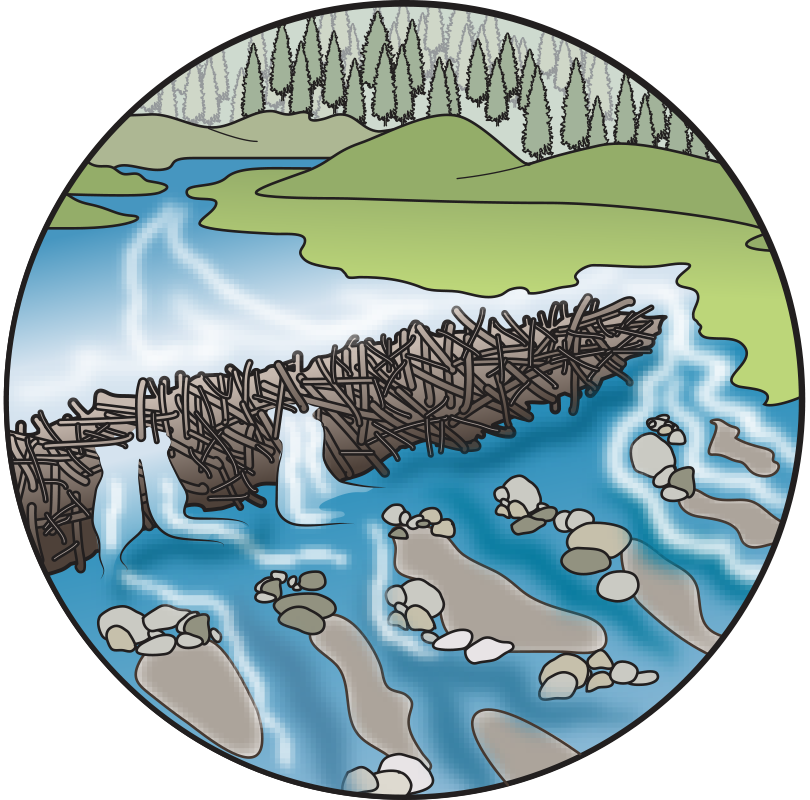
Recruit Beaver and Restore Colonies
Beaver ponds provide excellent habitat for coho because they slow stream flow and generate abundant off-channel and edge habitat. Among other benefits, these conditions provide refuge from flood flows in winter (thereby addressing the major limiting factor for Oregon Coast Coho: inadequate over-winter rearing habitat) and from high water temperatures found in tributaries during the summer months which are often a secondary limiting factor. These habitats also provide cover from predators and abundant food, which requires substantially less energy to find that than in higher velocity tributary habitats. In addition to the physical habitats created, beaver ponds also drive watershed processes that can recruit and retain spawning gravels, increase hyporheic flow, elevate local water tables, increase summer streamflow, and promote lateral connectivity between the stream channel and floodplain.
The American beaver (Castor canadensis) was heavily exploited by 19th century European fur trappers and continues to be removed from coho-bearing streams today where they conflict with human activities on residential and working lands. Beavers’ capacity to restore watershed function and enhance habitats beyond just a reach scale makes their protection and re-introduction essential to increase over-winter survival. In addition, because high quality habitat may persist as long as beavers are present, beaver conservation generates a high ratio of benefit to cost. These considerations make the recruitment of beavers and restoration of beaver pond habitats one of the most impactful and cost-effective strategies available to the coho recovery effort. The Coast Coho Partnership is working with several organizations to promote cost-effective, voluntary strategies for landowners to “live with beavers” when conflicts arise.
